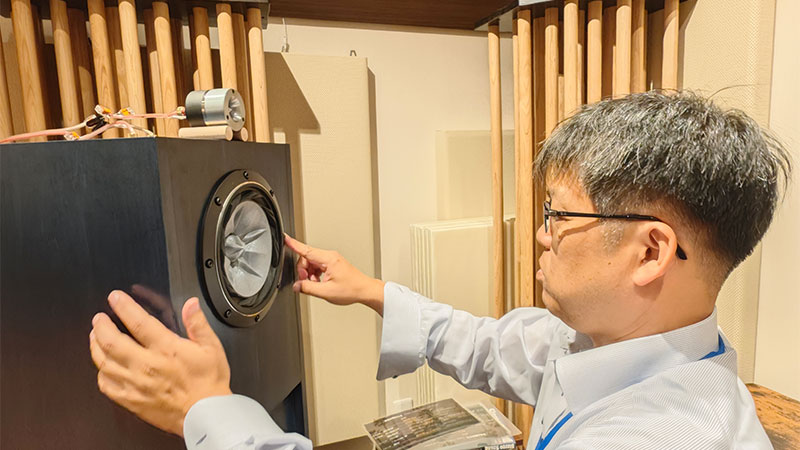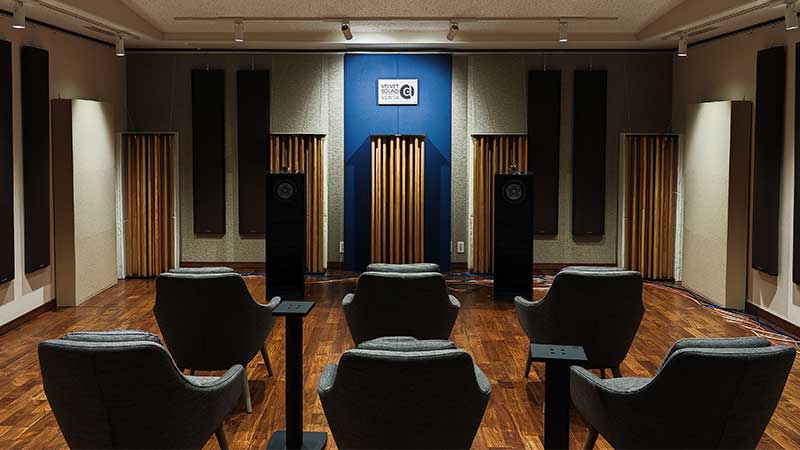Digital Filters and Sound Quality
- In Search of "Real Live Sound" -
May 2020
Meister's Tutorial #01
Digital Filters and Circuit Noise
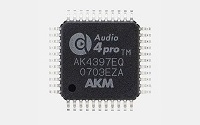 AK4397
AK4397
Years ago, an AKM customer pointed out that no D/A converter in the world could convert 32-bit audio data sent directly from a 32-bit DSP. In response, AKM launched the AK4397 - the our first 32-bit audio DAC - in 2007. We were convinced that moving to a 32-bit architecture would improve sound quality with respect to conventional 24-bit products, so we made a test chip to verify that theory.
We decided to make two versions of the test chip. One version would have a digital filter stopband attenuation of 100dB (the conventional spec), and the other would have 120dB, which is 10x the attenuation. This approach enabled us to evaluate the sonic effect of the aliasing noise inherent to digital audio data.
Our evaluation confirmed that adopting a 32-bit architecture yielded a clear improvement in sound quality. Surprisingly, the effect of the more extreme 120 dB digital filter was not what we had expected: the test chip with 100dB of stopband attenuation was sonically preferable to the 120dB version. At first, we didn't understand why this was the case. After a great deal of consideration, we found that the noise caused by the operation of the 120dB digital filter itself was adversely affecting the sound quality. As it turned out, the smaller the digital circuit, the better the perceived sound quality.
This experiment taught us that when it comes to sound quality, we need to take into consideration not just the aliasing noise caused by the chosen digital filter design, but also the noise that is generated by digital circuitry in general. Based on this experience, we try to keep the digital circuitry in AKM's DACs to a minimum.
Filter Response and Sound Quality
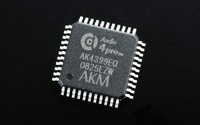 AK4399
AK4399
One of the main design goals for AKM’s next 32-bit DAC, the AK4399, was the implementation of digital filters with a low group delay. We had heard, particularly from the North American market, that our competitors’ digital products had lower group delay times than ours. Group delay contributes to overall latency, and low latency is crucial for echo and noise cancellation applications, necessitating our development of a new digital filter core.
The first AK4399 prototype chip met our expectations with respect to group delay, and the frequency response was also satisfactory. Nonetheless, we found the sound quality to be very poor when listening to music; the specs had been met, but the results were not pleasing to the ear. An extremely challenging investigation followed, leading to the conclusion that the filter’s impulse response (in this case, it had pre-echo but no post-echo) was to blame for the poor sound quality.
After the failure of our prototype chip, we moved forward with a new filter approach that produced a more pleasing sound - this time no pre-echo, with some post-echo - and asked a reliable customer to audition the device prior to mass production. With confidence, we introduced the AK4399 to a customer that manufactured musical instruments. After listening to our demo, he said “the position of that drum is different from the way that I recorded it.” Sure enough, the positions of the cymbals, toms, and hi-hats within the sound field were slightly different from where they actually were during recording. We realized that filter processing is largely to blame for the so-called “smell of digital audio.”
We addressed that shortcoming by developing a new product, the AK4482. This device employed a digital filter with a short delay and slow roll-off; such filters are favored based upon the assumption that there should be no audio activity before the initial sound occurs. We demonstrated the AK4482 to the same customer that had noted the positioning issues of the AK4399. To our relief, he said “this time the positioning of the drums is faithful to the way that I recorded them.” This time, it sounded analog.
The development of AKM’s digital filters has always relied upon the voices of our customers. It’s an iterative process: we try new approaches, demo our products to customers, find our mistakes, then improve upon them and go back to the listening room. Our ultimate goal is always wonderful, authentic sound quality; this is even more important to us than impressive measurement results.
Digital Filters and Preferences
As of 2020, AKM supports the following six digital filters.
The availability of six different types of digital filters leads to a common question: “which filter is the best?” Sound quality is subjective, so there is no definitive answer. As an example, I’ve had the opportunity to demonstrate our digital filters to many customers and AKM engineers all over the world and have noticed regional trends with respect to sound quality preferences. Listeners in Asia tend to prefer the sharp roll-off filter and the slow roll-off filter, while customers in Europe and the Americas seem to like the short delay, sharp roll-off filter.
I’ve tried to find explanations for these regional preferences. Perhaps the characteristics of the language spoken by the listener have an influence. Maybe those who speak a language requiring a high sensitivity to consonant sounds, such as English or German, prefer the short delay and sharp roll off filter, with no pre-echo, and those speaking Asian languages (e.g., Japanese or Korean), with more sensitivity to vowel sounds, tend to prefer the sharp roll off or slow roll off filter. It’s an interesting hypothesis, anyway.
We can’t say “this filter is the best for you,” but we believe that our customers will select the filter that works best for their products, with their own signature sounds. In other words, let your ears be the judge.
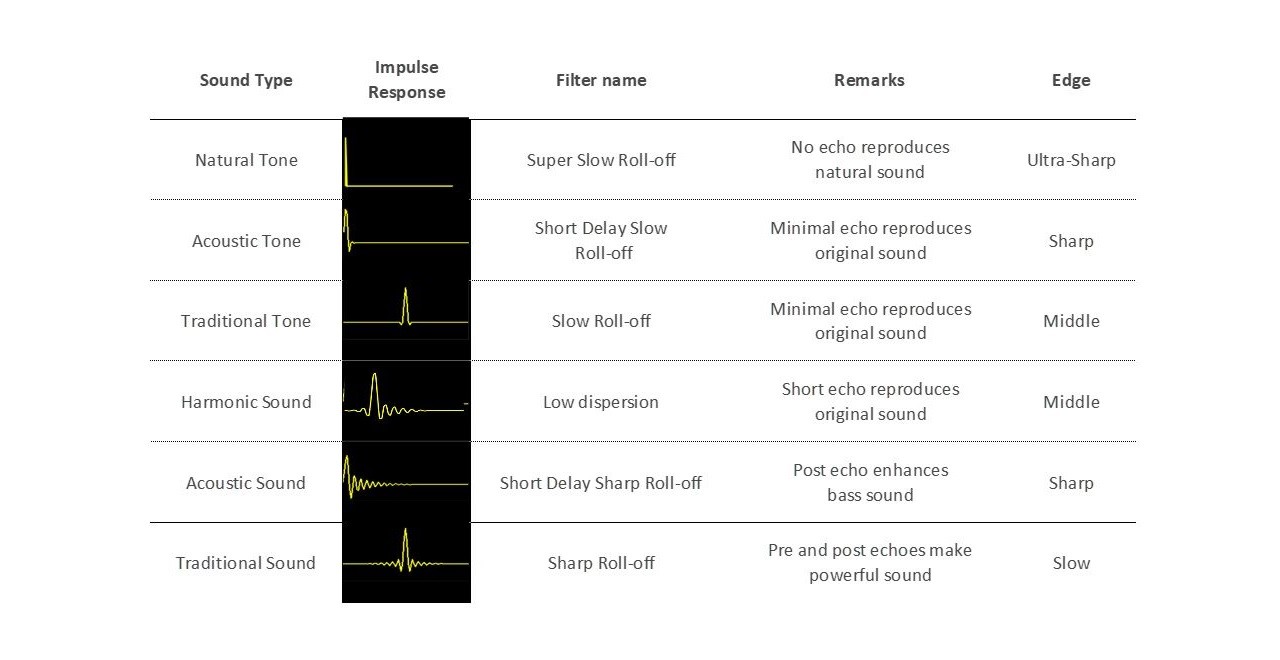
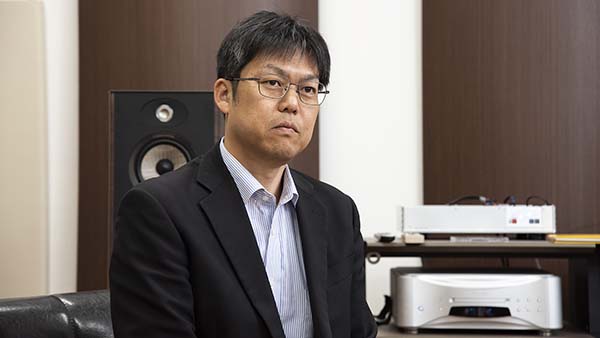 Tomonori Sato
Tomonori Sato
Tomonori Sato, Audio Meister
Marketing & Sales Center, Asahi Kasei Microdevices Corporation
Sato entered Asahi Kasei Corporation in 1998. Since then he has been involved in the development of ICs for audio equipment and internationally pioneered the planning of 32-bit DACs and ADCs. In 2009, he became the Audio Meister of Asahi Kasei Microdevices. Since then, he has brought into the world the VELVET SOUND series of DAC chips, including the AK4490, AK4497, and AK4499. They are used in numerous pieces of audio equipment. One of the recordings he uses to review sound quality is the 1988 Philips Saint-Saens: Carnival of the Animals performed by Argerich, Kremer and others. His hobby is making speakers and he uses an exclusive Fostex unit to listen through his own enclosures.


